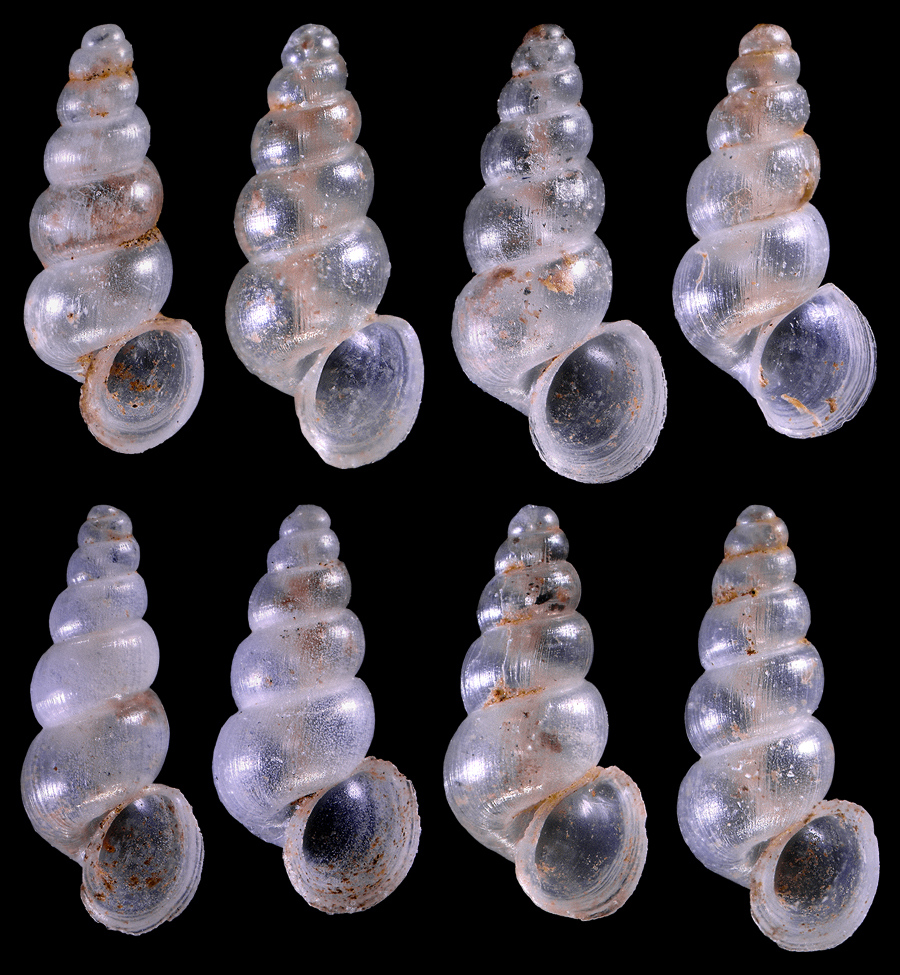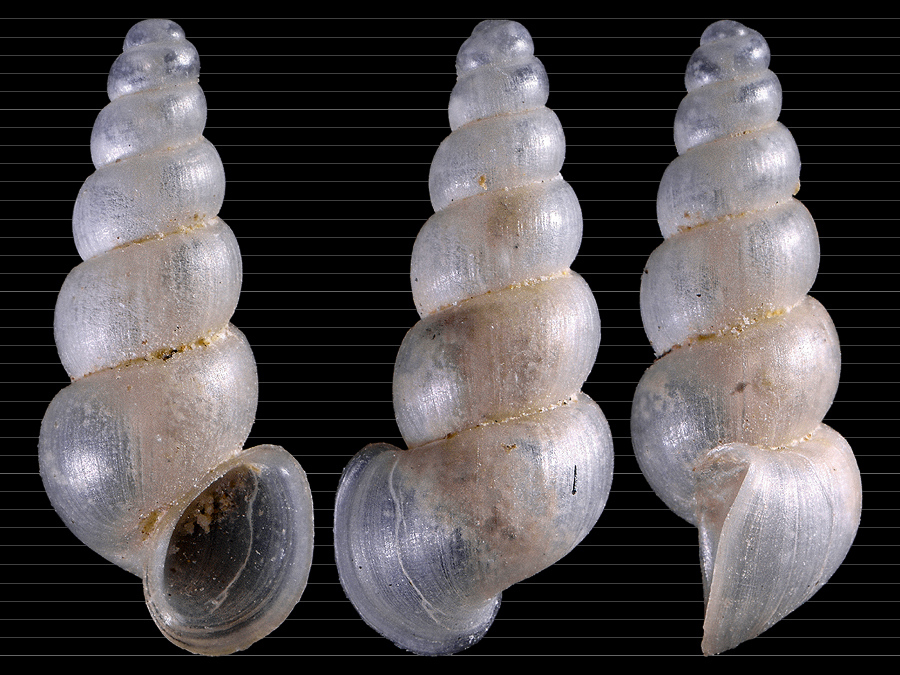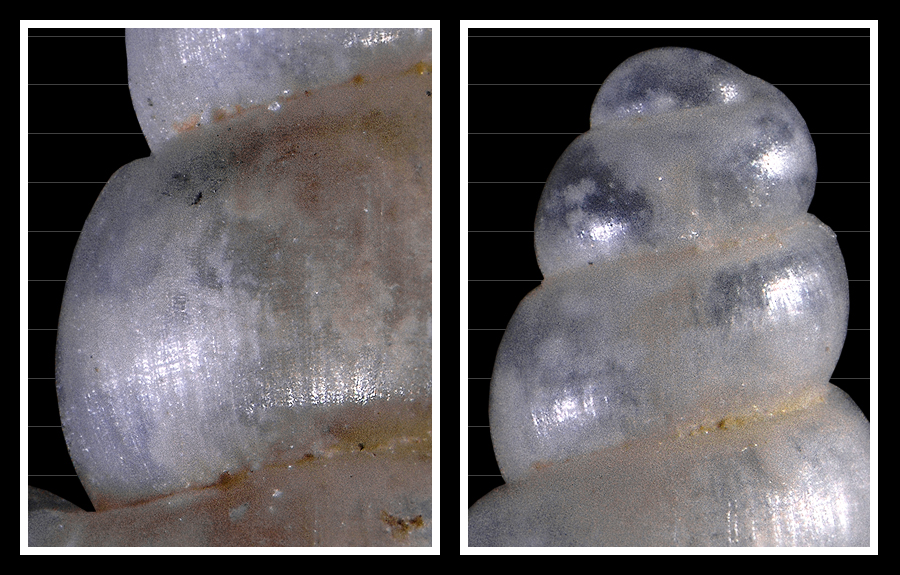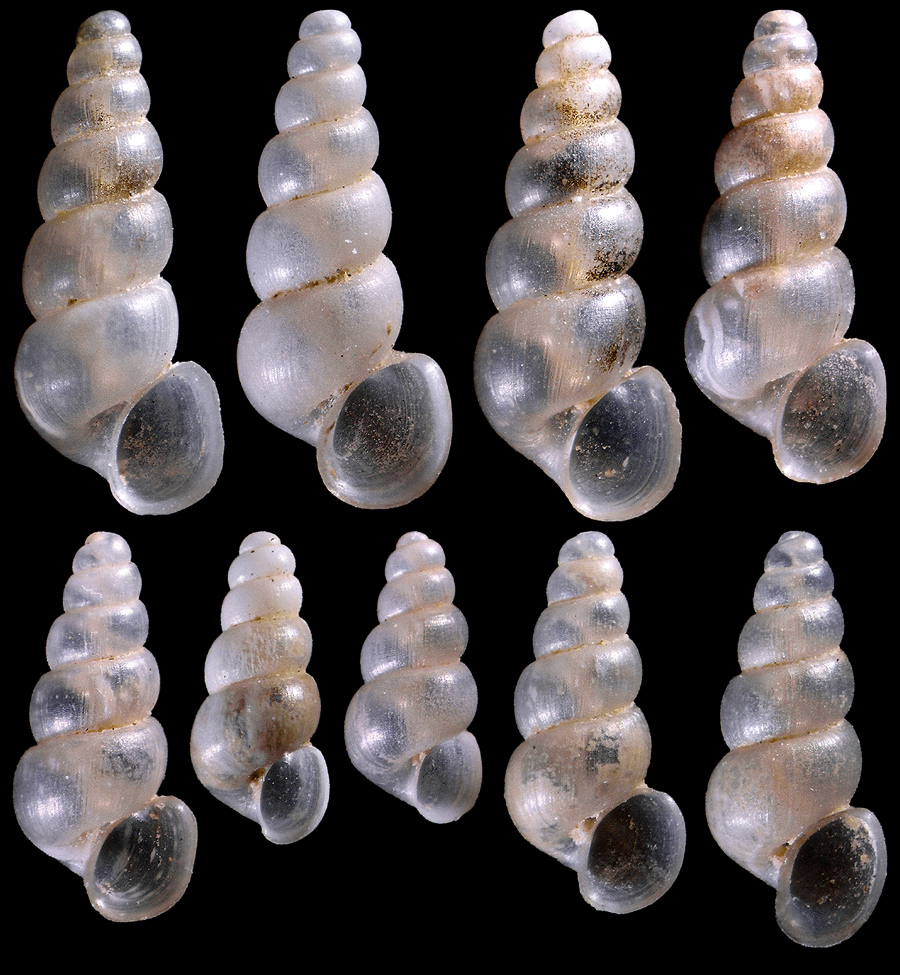(?)Palacanthilhiopsis margritæ Bœters & Falkner, 2003
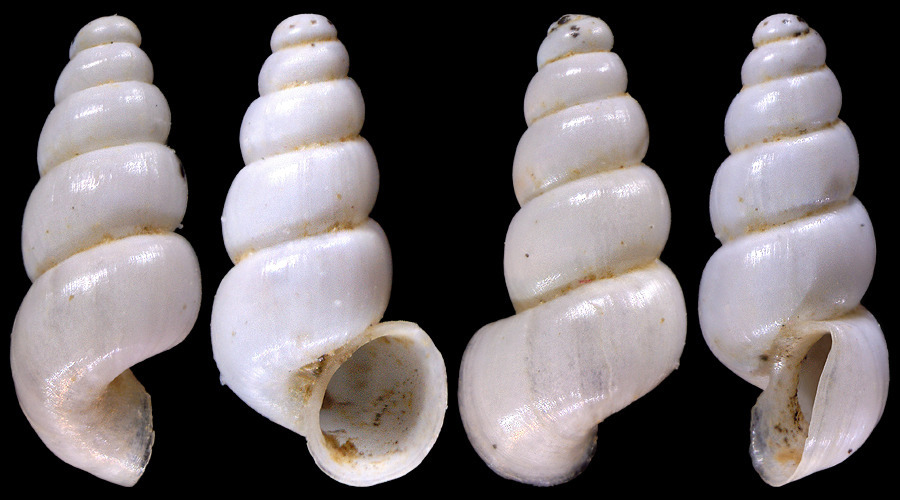
For the time being, registered only from the type locality, Saint-Alban Auriolles, southern Ardèche.
Above: a subfossil from Font Méjanne. Altitude ≈ 180m. 2,5mm.
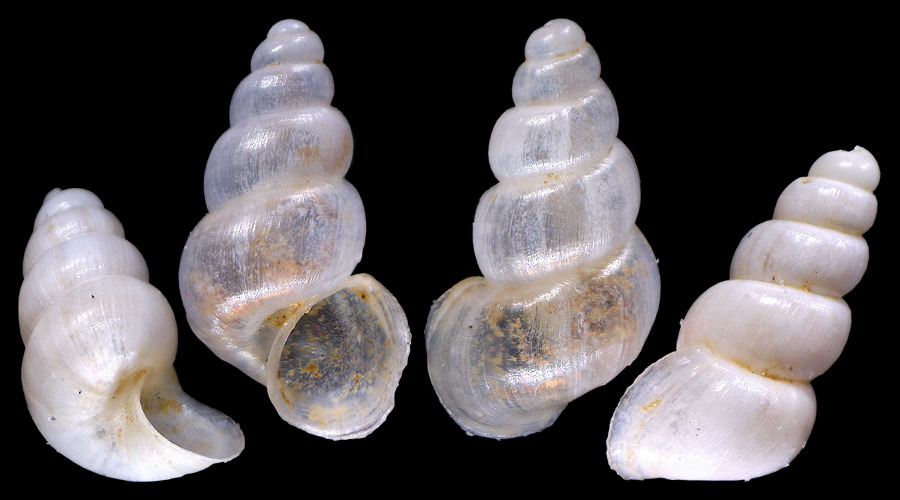
The differences with Bernasconi’s P. vervierii are not clear. « P. margritæ n. sp. is distinguished from P. vervierii Bernasconi 1988 (plate 4 fig. 23) by the fact that the shell of the type has about one whorl more, and is conspicuously larger. » – Bœters & Falkner: “Unbekannte westeuropäische Prosobranchia, 14. Neue und alte Grundwasserschnecken aus Frankreich (Gastropoda: Moitessieriidae et Hydrobiidae)”, Heldia 5 (1-2), p.13 and plate 4, figures 24-26 for margritæ and 23 for vervierii. In fact, the plate 4 shows a vervierii (fig. 23) markedly larger than the shells figured in 24-26, with one more whorl. The comparison between the figs. 23 and 24, which are shown at the same scale, lead to conclude that the species whose shell has « about one whorl more, and is conspicuously larger » is vervierii (Bernasconi registers a size of about 3,5mm), while margritæ must be smaller (size around 2,8mm in Bœters & Falkner as for most of the large specimens pictured on the present webpage), with one whorl less than in vervierii.
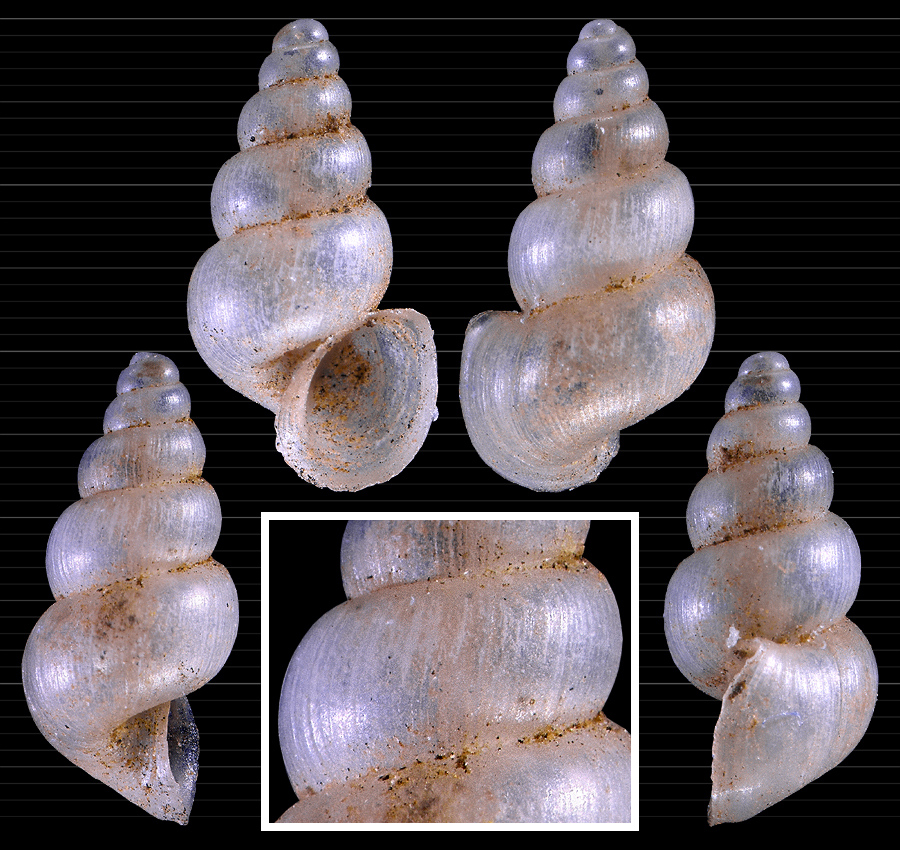
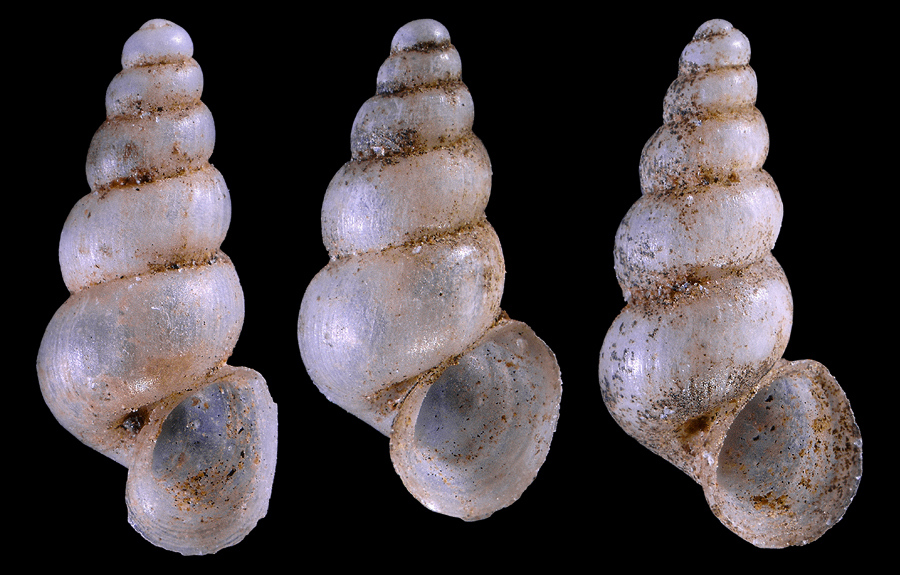
The sizes and the number of these whorls are those of vervierii for the left and right specimens, while there is a nominal margritæ in the center.
